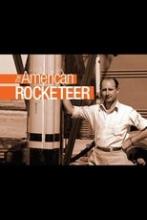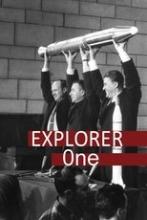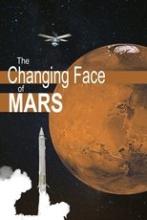
Beginnings of the Space Age
Three Part Documentary that includes JPL-produced Explorer 1: The Beginning of the Space Age, Destination Moon, and The American Rocketeer.
Beginnings of the Space Age: Destination Moon (2011)
17 November, 2011
"Destination Moon" is the third in the trio of documentaries about the beginnings of the space age. It documents JPL's ambitious plan to beat the Soviet Union in robotic space exploration by reaching not only for the moon, but also the inner planets. But as the hour-long episode documents, JPL would be humbled by a series of failures in attempting to merely hit the moon, let alone visit the other planets. "We didn't know what we were doing," one veteran JPL engineer confides, "and there was no one around to tell us." This film shows how JPL did learn to go to the moon and to the planet Venus, giving the United States its first "First in Space."
Beginnings of the Space Age: The American Rocketeer (2011)
03 November, 2011
"The American Rocketeer" tells the controversial story of aviation engineer Frank Malina, whose fundamental role in the evolution of American rocketry is largely forgotten. Malina, along with a motley crew of amateur rocket enthusiasts and fellow California Institute of Technology students, conducted the first stand-up rocket engine test on Halloween in 1936 in the Pasadena Arroyo. On this 75th anniversary of those tests, this 90-minute, intensely personal documentary explores the complexities of Malina's life and the profound ramifications his work had on Caltech and the nation. "Though there are many fascinating characters in the American Rocketeer, at its core, this film is a personal story of one man's dreams," noted producer Blaine Baggett, "and how his ideas and idealism put him on a collision course with the world."
Explorer 1: The Beginning of the Space Age (2007)
01 December, 2007
"Explorer 1" is the second episode of "Beginnings Of The Space Age". The 60-minute documentary reveals how JPL and the U.S. Army could have been the first to place a satellite into Earth orbit, had they only been given the chance. That opportunity was lost when the Eisenhower administration, unsure of what the Soviet reaction would be to a satellite launched (in part) by the U.S. Army military, hesitated and assigned the project to a civilian-led program called Vanguard. The Soviet Union launched Sputnik in October 1957, shocking the world and creating the "Race for Space" in the midst of the Cold War. Only after the Vanguard rocket exploded on the launch pad were JPL and the U.S. Army given its chance. The result was Explorer 1, the first successful U.S. satellite, which also achieved the first space science results.
The Changing Face of Mars (2013)
23 January, 2013
Discover the story of our first quests to explore Mars as Emmy award-winning producer/director/writer and director of the office of communication and education at JPL Blaine Baggett premieres his latest documentary film, The Changing Face of Mars. The JPL - produced, 90-minute documentary is told through a mix of archival footage and interviews with the scientists and engineers who pioneered Mars exploration. It serves as the fourth installment of Baggett's Beginnings of the Space Age documentary series chronicling the evolution of space exploration since the first rockets were launched into space.




